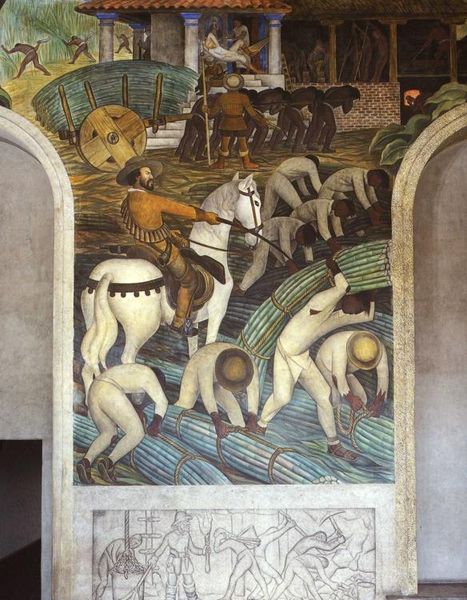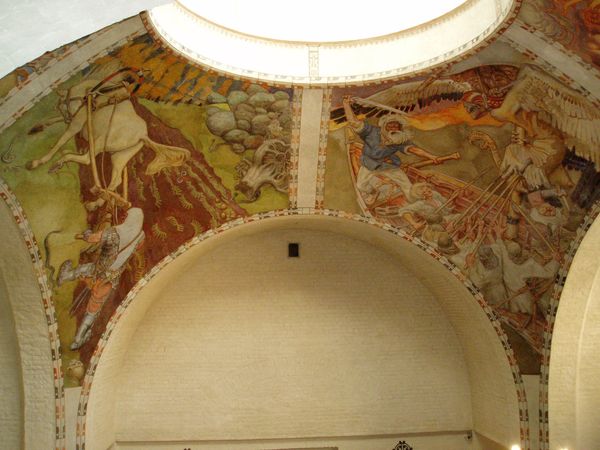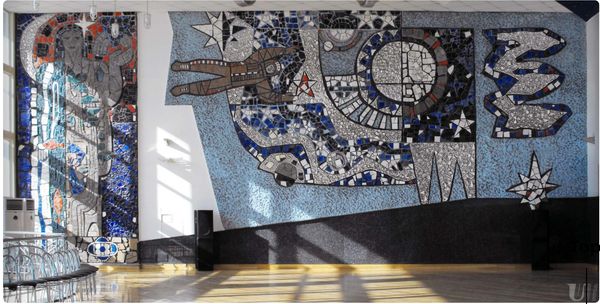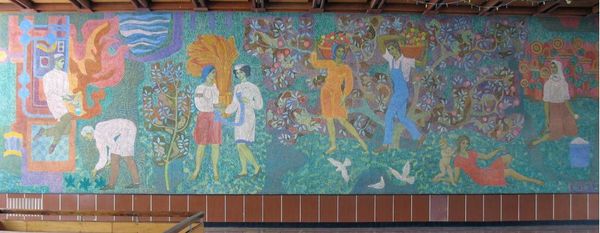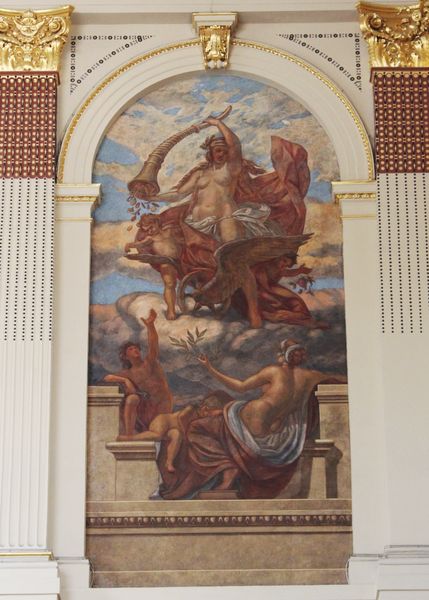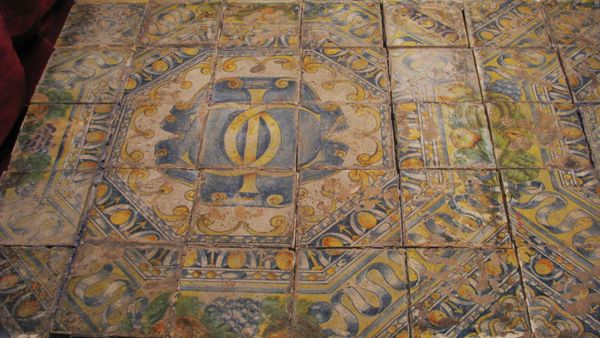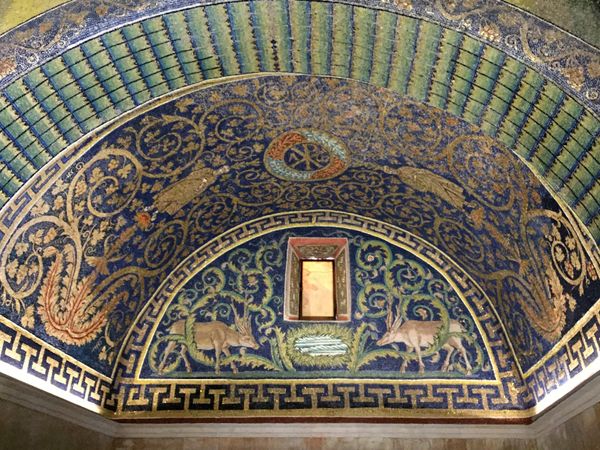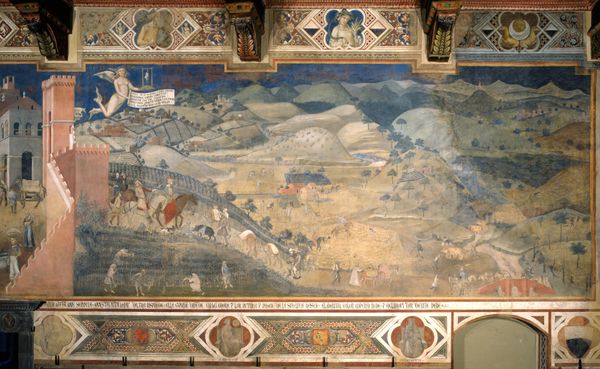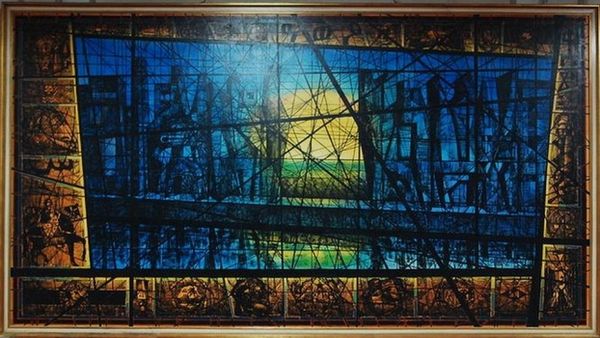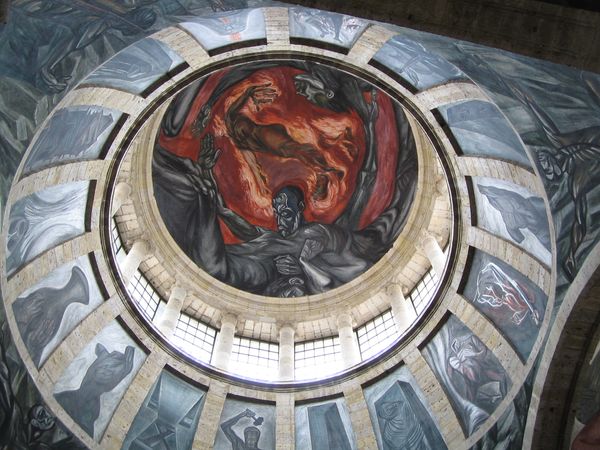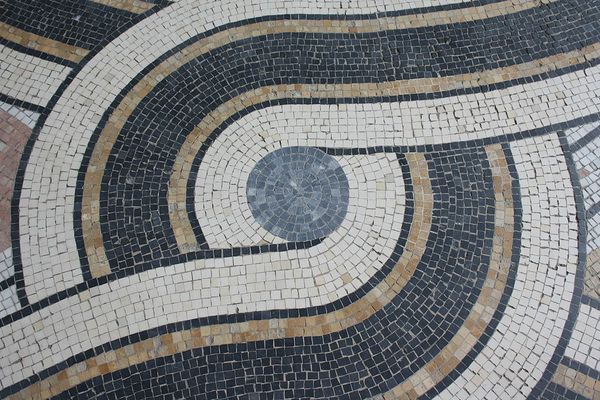
Departure of rooks 1914
0:00
0:00
nicholasroerich
Taganrog City Architectural Development Museum, Taganrog, Russia
ceramic, mural
#
art-nouveau
#
landscape
#
ceramic
#
geometric
#
mural
Copyright: Public domain
Curator: This is "Departure of the Rooks," a ceramic mural crafted by Nicholas Roerich in 1914. What's your initial take? Editor: Intriguing. There’s an immediate sense of deliberate artistry and skilled craftsmanship. I notice how the ceramic medium itself impacts the final form. There's something about the labor-intensive construction and the repetitive nature of individual tiles, which suggests the human element, the hand involved in the overall scene's rendering. Curator: The modularity imposed by the medium absolutely informs how the narrative unfolds. Observe how Roerich leverages the grid-like structure to segment the pictorial space into interlocking zones, a fascinating tension between representation and geometric abstraction. What structural features particularly resonate with you? Editor: For me, it's about how those zones build into larger scenes and coalesce into a cohesive narrative. The varied blue and green hues create distinct bands across the horizontal axis and capture the rhythm of natural elements within a structured process— a balance I appreciate. I see it less as "geometric abstraction," and more as a reflection of building with raw components. Curator: Ah, yes. But doesn't that structural fragmentation force us to piece together a complete scene in our minds? Note also how Roerich organizes those angular mountain ranges or uses these elongated figures. These compositional choices emphasize design and surface over deep illusionistic space. I appreciate how this echoes a more broadly "Art Nouveau" idiom. Editor: To your point about Art Nouveau, considering this mural in the social context of the era might lead us to explore other interpretations. Its use of standardized, repeatable ceramic units speaks to the era's burgeoning industrial production, but it is rendered here with uniquely personal touches by craftspeople under his direction. Curator: Indeed. We discern here the tensions of early 20th-century aesthetic sensibilities as much as craft is brought forward. This push-and-pull mirrors a broader anxiety about cultural transformation and how traditions must negotiate rapidly changing modern circumstances. Thank you, I think that's a fine note to end on. Editor: Certainly. And this conversation underscores for me the intrinsic value of understanding the means by which this work was brought into existence.
Comments
No comments
Be the first to comment and join the conversation on the ultimate creative platform.
